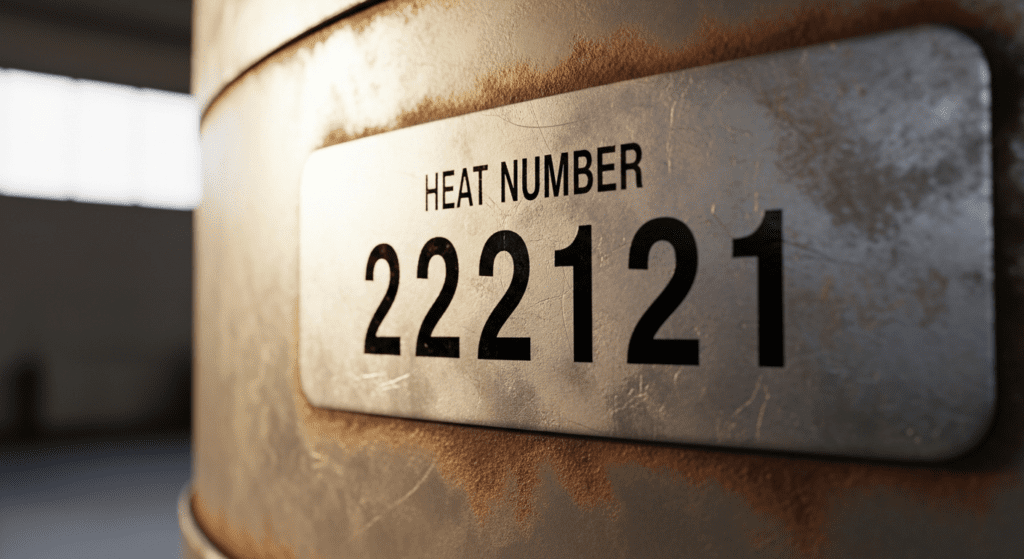A heat number is a unique identification code stamped on metal products that traces back to their manufacturing batch.
Heat numbers typically use a combination of letters and numbers that provide specific information about the metal’s production. The format varies between manufacturers, but most follow similar patterns.

The first digit or letter in a heat number usually identifies which furnace produced the metal. For example, in a heat number like “222121,” the first “2” indicates furnace number 2.
The next digits typically show when the metal was made. In our example “222121,” the digits “22” represent the year 2022.
The final digits indicate the specific batch or “melt” number. In “222121,” the last three digits “121” mean this was the 121st melt from that furnace in that year.
Some heat numbers include codes that identify the type of material or grade of steel. These might appear as letters or additional numbers in the sequence.
For instance, a code might indicate whether it’s carbon steel, stainless steel, or a special alloy.
Certain manufacturers add part or pattern numbers to their heat numbers. These aren’t always present but can provide extra tracking information when needed.
